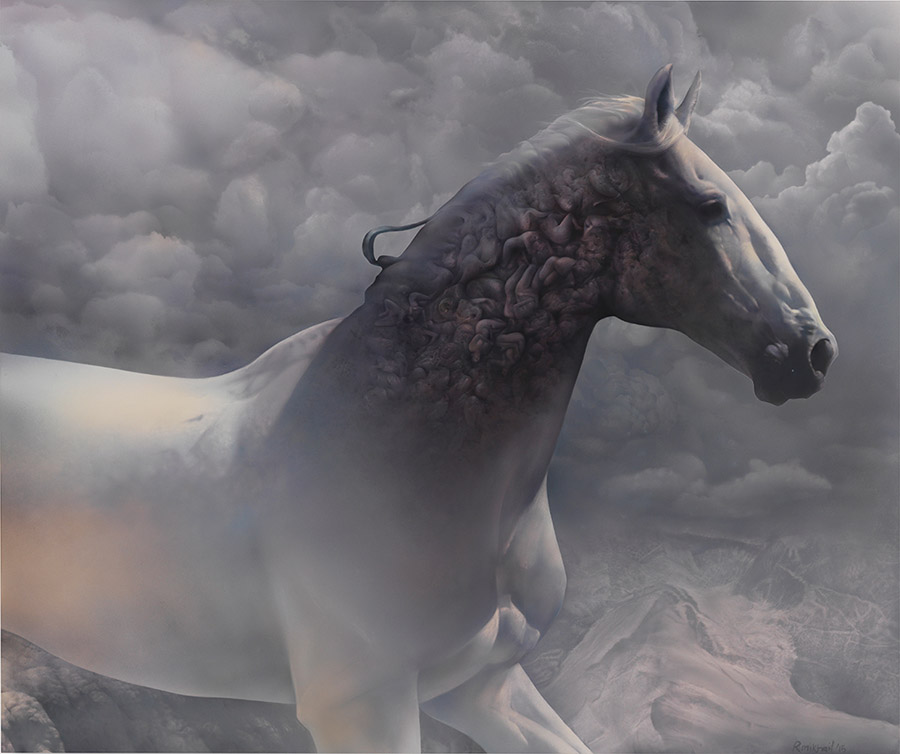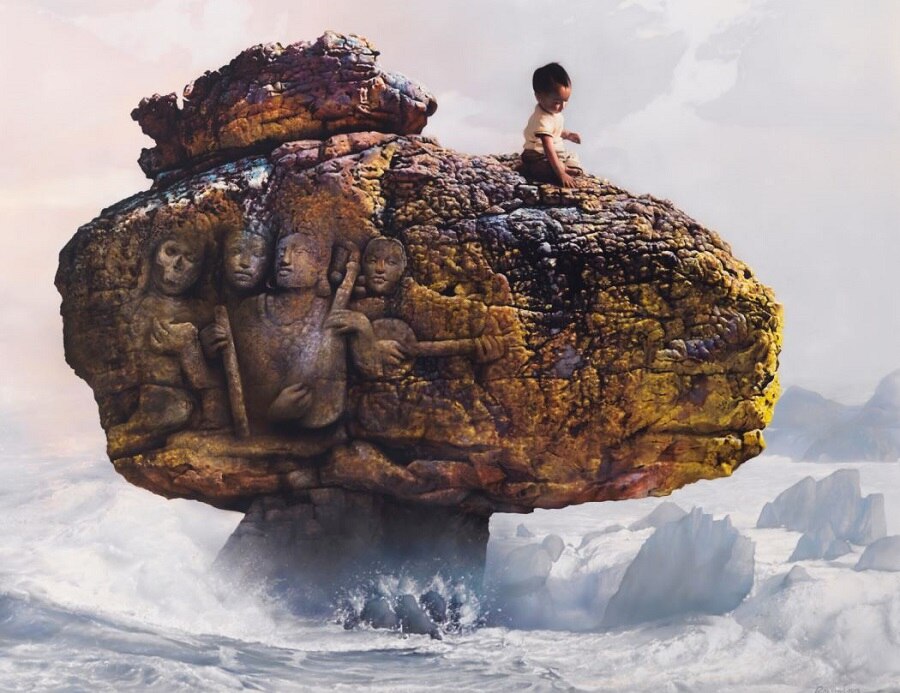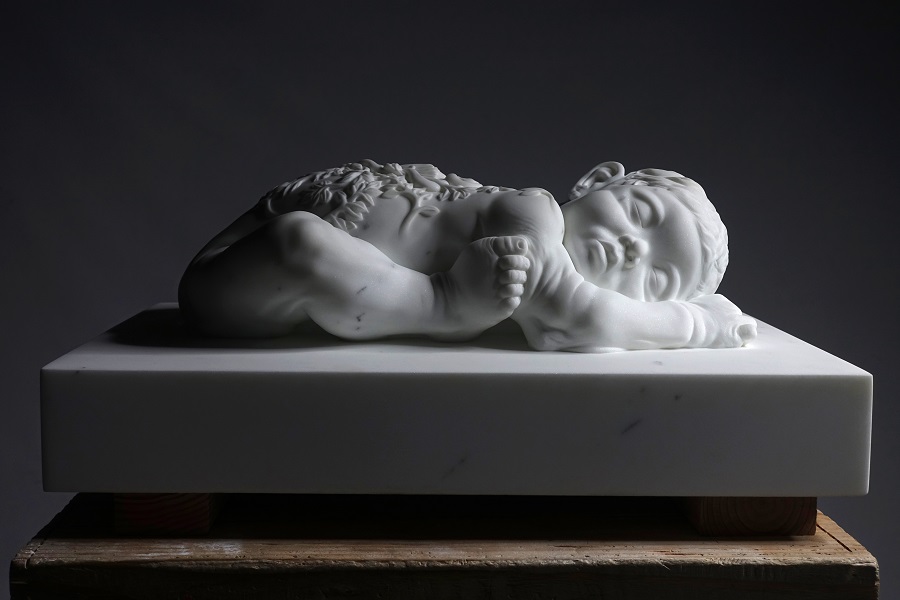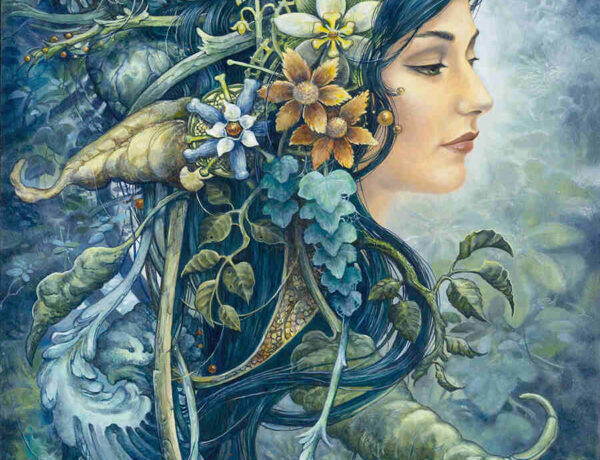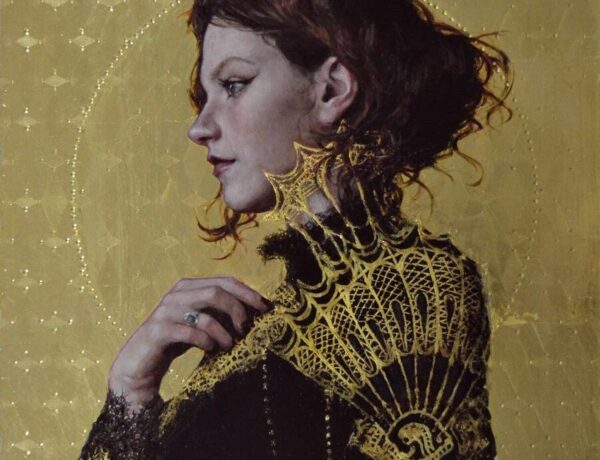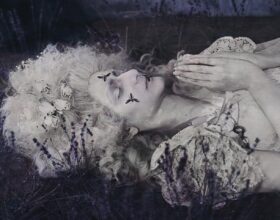Text below is from 2021 Beautiful Bizarre Art Prize Winner, Roland Mikhail’s exclusive interview published in the December 2021 Issue 35 of Beautiful Bizarre Magazine. Interview conducted by Natalia Joruk. The print issue is sold out, however you can still download the digital magazine here.
Roland Mikhail is a man with deep insight and intuition. The care with which he speaks about his life and his art – two highly intertwined fundamentals – can leave you sitting a little straighter, feeling more positively aware about your own surroundings and the way in which you respond to the world around you. Visually, there is a gentleness to his art which can settle you into a meditative space as you take the time to absorb all of the many details. And many details there are. Like waking from a dream or a long-lost memory, staring at Roland Mikhail’s creations pushes the brain to bring up fragments of scenes and ideas. It can be hard to make out exactly what it is you are seeing within the tumbled shapes. These are scenes within scenes. Yet, is one layer of imagery more important than the other? Perhaps that is in the eye of the beholder.
It’s no revelation that we each interpret art through the lens of our own experiences, and Roland’s ability to merge multiple cultures amalgamates a universal essence of ancient knowledge which we are all, on some level, familiar with. In a way, his works invite us to connect with something deeper within ourselves. We are encouraged to enjoy his imagery and symbolism without a single message being forced upon us by the artist himself.
The idea that myth, dream, fantasy and art come from the same unconscious dimension of the human experience really grabbed me.
Look inward and see what comes to the surface. True self-awareness can be a terrifying psychological state, yet the way that Roland approaches his art encourages gentle practice into this philosophy too. The concept of care and devotion comes up again and again. Care and devotion to one’s art and to one’s self is a welcome notion, but in a world where many of us are overworked and always plugged in, it can feel more fanciful than reality. If any of the above touches close to home, you may find special interest in my interview with Roland Mikhail. His low-pressure, high-rumination approach towards his art goes against the overarching modern-day mentality of producing outcomes fast and ready. Rather than feeding the impatient beast of social media and its interlinked demons, Roland stays in a fascinating creative space bound within “long signatures of time”.
Naturally, this has its impracticalities. But I found when speaking with Roland, it was a feeling of positivity which grew in me. Here is a man whose deep connection to his art goes far into our historical past. He creates art because it fulfills something within the soul. Because it is the language harking back to that our ancestors used to communicate experiences and emotions, beyond words and even cultures. It is a process to better understand oneself. Fundamentally, all of these reasons dig deep into the beautiful roots of our creative culture. And perhaps now, more than ever, we need to be reminded of the true reasons human beings create art.
Hi Roland, thank you for agreeing to be interviewed and congratulations again on winning the 2021 Beautiful Bizarre Art Prize! How does it feel?
It was a really incredible surprise! It means so much to me. I’m excited and grateful that this amazing prize exists and that my work was chosen from so many incredible artists.
Your works really intrigue me; the subtle surrealism that you create ensures that the viewer will continue to find new things the more they look. Moreover, you imbue your works with your interest in multicultural symbology and mythology. I’m sure we could publish a whole feature on this element alone, but can you give me an overview of your journey into these fields?
I suppose my journey into these fields began when I was about 19 and I came across the depth psychologists and Joseph Campbell. These were my mentors in understanding symbolic language, and the power it has to go around the intellect to speak directly to the whole being. The idea that myth, dream, fantasy, and art come from the same unconscious dimension of the human experience really grabbed me. Under these different expressions lie a universal language of the psyche: metaphor. My experience of this language is that it gives form to the unseen. It has the ability to act as a threshold between the unconscious and consciousness; there is a mystery around how deep the medium of metaphor can touch us that it seems is hard to fully appreciate. This understanding of metaphor has been a guiding star in my hope to make something that can really touch others.
The way you speak about your art reminds me a lot of the visionary artists. I admit, I personally adore the versatility within this circle of art; there is so much to unpack from within the subconscious and to portray through symbolism. It’s interesting though that your works are more subtle than the usual ideas that float to mind when thinking of this genre…do you consider yourself a ‘visionary artist’?
I see why you would ask, because there are crossovers in influence. I don’t consider myself a visionary artist. I don’t really even think of genre that often in order to frame the work for myself. Don’t get me wrong: I do reference different genres when I make the work, but the foundation that informs everything else is the process of unravelling and discovering new metaphors.
That makes sense. On the note of unravelling and discovering, I saw from one of your Instagram posts last year that you have spent hundreds of hours experimenting with clearcoat varnish to find the perfect mix and process which really shows off the details in your paintings. That’s real dedication to the cause!
Many years ago, I began an investigation into the character of sacred objects. I came away with an understanding of a universal quality in these objects that eventually became the foundation of my methods. No matter how simple or sophisticated the materials and means of creation, sacred objects are made with a care and devotion as though its author’s life and even their communities’ lives depended on it. Love and care are words of devotion that became more and more pronounced in the creation of my works.

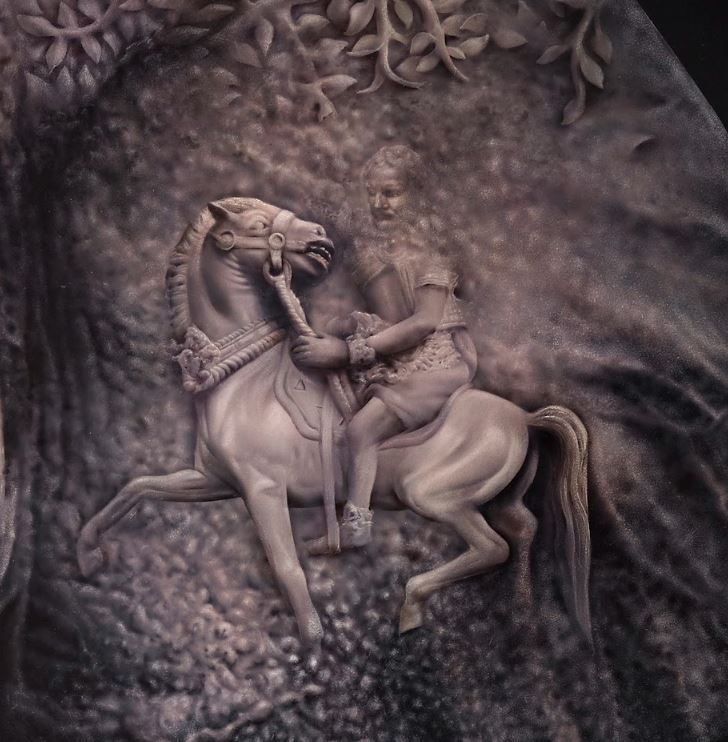
Would you say this level of “Love and care” reflects you as an artist overall?
Completely. This attitude informs all my works. Everything I make is created over the course of months and years. It’s definitely an impractical relationship I have to the work, but one that I haven’t shaken. I believe this devotion and these long signatures of time are felt in the presence of these objects. They are important ingredients in making something that has the power to touch someone. I would also say that there is more to why I spare no expense in time with my works besides technical perfection. The sense of devotion also extends to the poetry of the image. I usually vet an image for a while before I commit, because then it becomes an image of contemplation for potentially years. These images are entwined with my psychic life in a way that is hard to believe.
As the weeks and months go by with these works, more and more awareness collects around the image that began only as an intuition. There have been many times when I’ve put a painting out of rotation. It can’t be resolved. Then, there is some relevant psychological change or threshold that’s passed, and suddenly the corresponding portion of the image reveals how it should be finished. It’s mysterious. There is a very utilitarian part of me that hates this explanation. When I’m in the middle of these experiences I’m pessimistic and completely skeptical, but when I finish them it’s always absolutely astonishing.
What I love about the reductive process is that no matter what mistakes you make, it asks you to still find a way to beauty.
Sometimes when I’m writing, the experience is an uphill struggle as I try to unravel and process my thoughts. The strangest part is that I can look back at a piece and be impressed – but swear I didn’t create it! It’s like my active recollection of the writing experience isn’t there. I’ve put this down to being very much in the ‘creative zone’. Do I sound totally insane, or have you ever experienced anything like this?
Haha! No, not insane. This sounds like such a universal experience of creativity, it’s probably always been this way around the creative act. I will repeat something I’ve heard said in many different ways. On the one hand there is the part of you that doesn’t feel like you did anything, and on the other hand, the part that does the work through discipline, focus and then gets exhausted from stretching itself. One part gets tired while the other seems like it did nothing at all. And I love that it gives the sense of conversation or collaboration between an aspect of ourselves we know and one we don’t. This is definitely my experience of the imagination and creativity too.

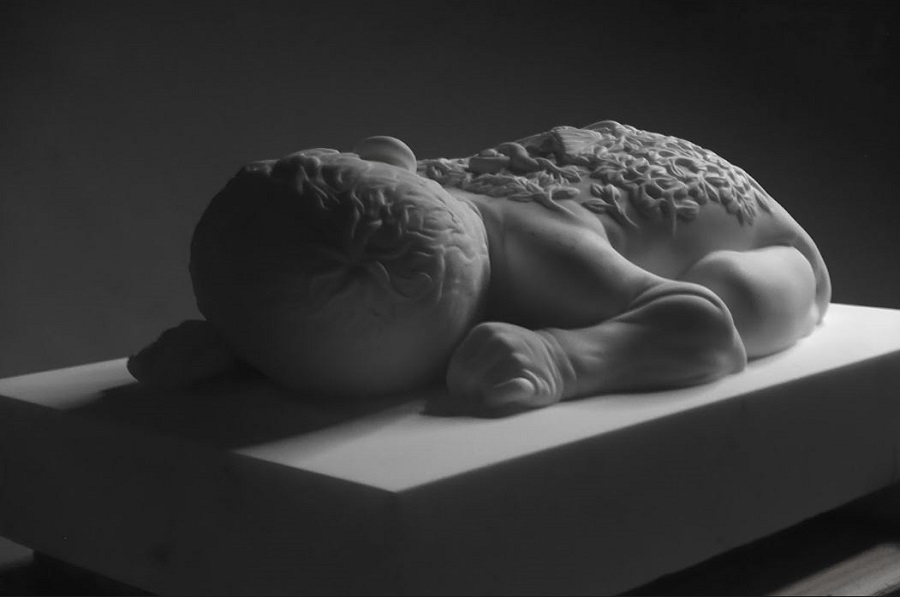
Now, as well as being the overall winner of the 2021 Beautiful Bizarre Art Prize with your painting memory’s descent, you were also a finalist in the Yasha Young Projects Sculpture category with your sculpture even gods have to be born. Being a finalist in two separate categories is a feat in itself. But what gets me even more is that this was your first finished sculpture ever, is that right?
Thank you! This is my first finished figurative sculpture. But because my method of approaching a work is so lengthy, I got lots of experience with materials before I got to finish any; so it’s definitely not magic. I had some clay that a good friend lent me sitting around for months. When I finally picked it up, I fell in love. I played with that clay all day. I learned how to sculpt clay very rapidly using YouTube, which is how I learned to sculpt the study for this sculpture. As for learning to carve marble, the thing people don’t realise is that it’s incredibly slow, methodical work. So by the time you’ve removed the material it takes to get to the surface of the sculpture, you’ve already had so many repetitions in with the chisel. You really get a feeling for the material even on the first sculpture.
Even Gods Have To Be Born: that’s a powerful title. How did the narrative for this piece evolve?
The narrative for this piece began like all of my works, with an intuition. The elements of the images usually slowly collect together by intuition and feeling. For the years before this image was started the symbols of pregnancy and infancy had become very potent metaphors around my inner world and dreams, and were already present in other works. This image was entangled with my inner life in away I hadn’t experienced before. Its creation shadowed a great inner change, which I couldn’t comprehend. What I did understand though, was that my life felt pregnant with grief and the feeling of something new coming to my life that I felt somehow resembled the image I was making. It was a long period of both grief and joy. I don’t think I ever lived so much in the creation of something. It was one of the great experiences of my life.
What is it about marble that enticed you to work with this pretty unforgiving material?
About 10 years ago I found I wasn’t looking at painting for inspiration and found myself completely preoccupied by ancient stone carving from all over the world. It took almost 10 years for me to understand and admit that this wasn’t just about inspiration. I felt a deep calling to work in this medium. Immediately, I felt connected to the material in a way that I can’t express. Working in stone must have deep taproots in our ancestry. It’s archetypal, and I feel that from the medium. You feel connected to an ancient experience. Just the process of working a piece of stone has so much symbolism and poetry. It is so well suited to my temperament. There is a combination of violence and delicacy that it takes to carve a piece of stone, and I love that.
You mentioned unforgiving. You’d be surprised. What I love about the reductive process is that no matter what mistakes you make, it asks you to still find a way to beauty. This was a huge change in my thinking and attitude to working. It was a bit of a revelation to see how choosing to work with stone could change the shape of your mind.
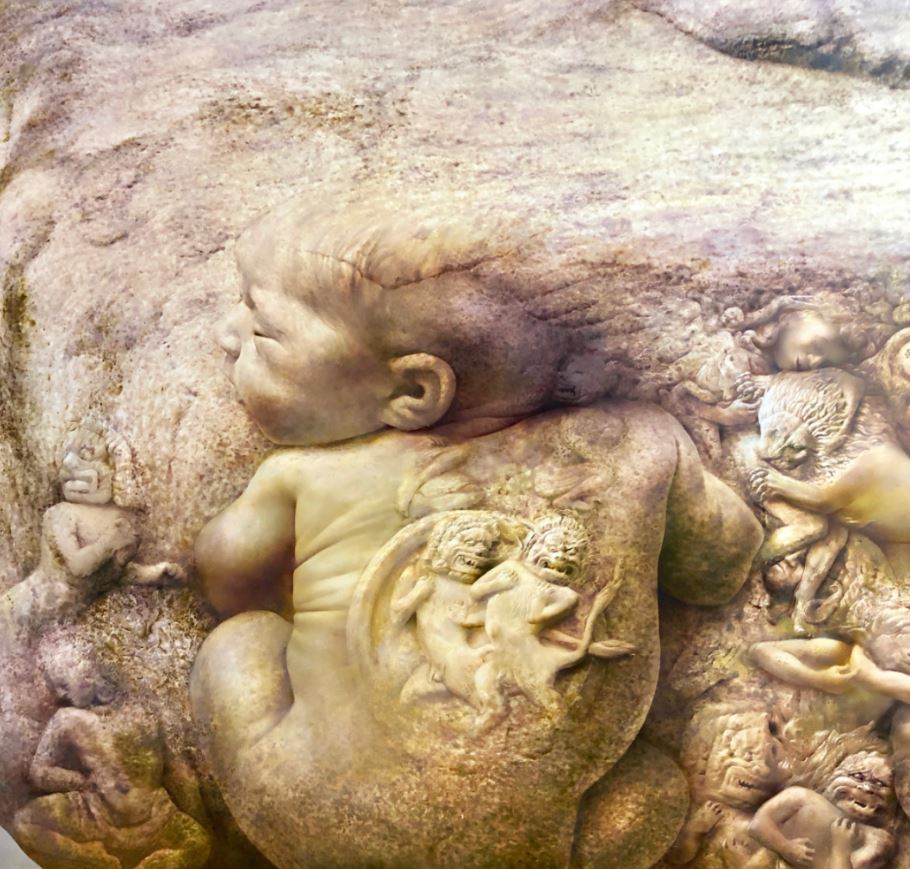
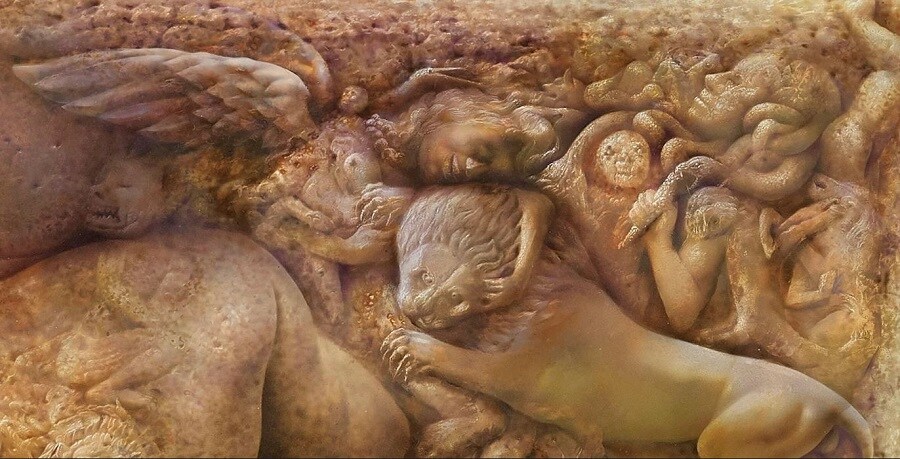
Looking at your work, I’ve noticed a certain affinity with children coming up again and again in your works, and you’ve mentioned the “Double Nature” of the symbol of the child. Can you tell me more about this?
I guess you could say there is a universal image of the child, and then our own personal image. When we see an image of a child, a reflection of our own personal past with all its limitations is implied. On the other hand, the archetype of the child is the great image of future and unbound potential. This unbound potential is embodied as the divine child that is found throughout the world’s mythologies and art. It seems the symbol of the child can bridge both of those worlds.
Through all of this research and experimentation, where do you feel you are heading to next as an artist?
Well, I try to let my curiosity and creative energy lead the way, so I can’t really be sure. But I can say I feel like a new opening is starting in my creative life. I love the process of carving and sculpting. It suits me. There will be more, at greater scale, and I’m beginning to turn my attention more and more to the idea of public work. I’m always trying to push my creative capacity. Other than that, I can say I have a large piece of marble in the works and about three paintings in rotation. I expect it will probably be a couple of years before these projects are all finished. In the meantime, more will be started.


